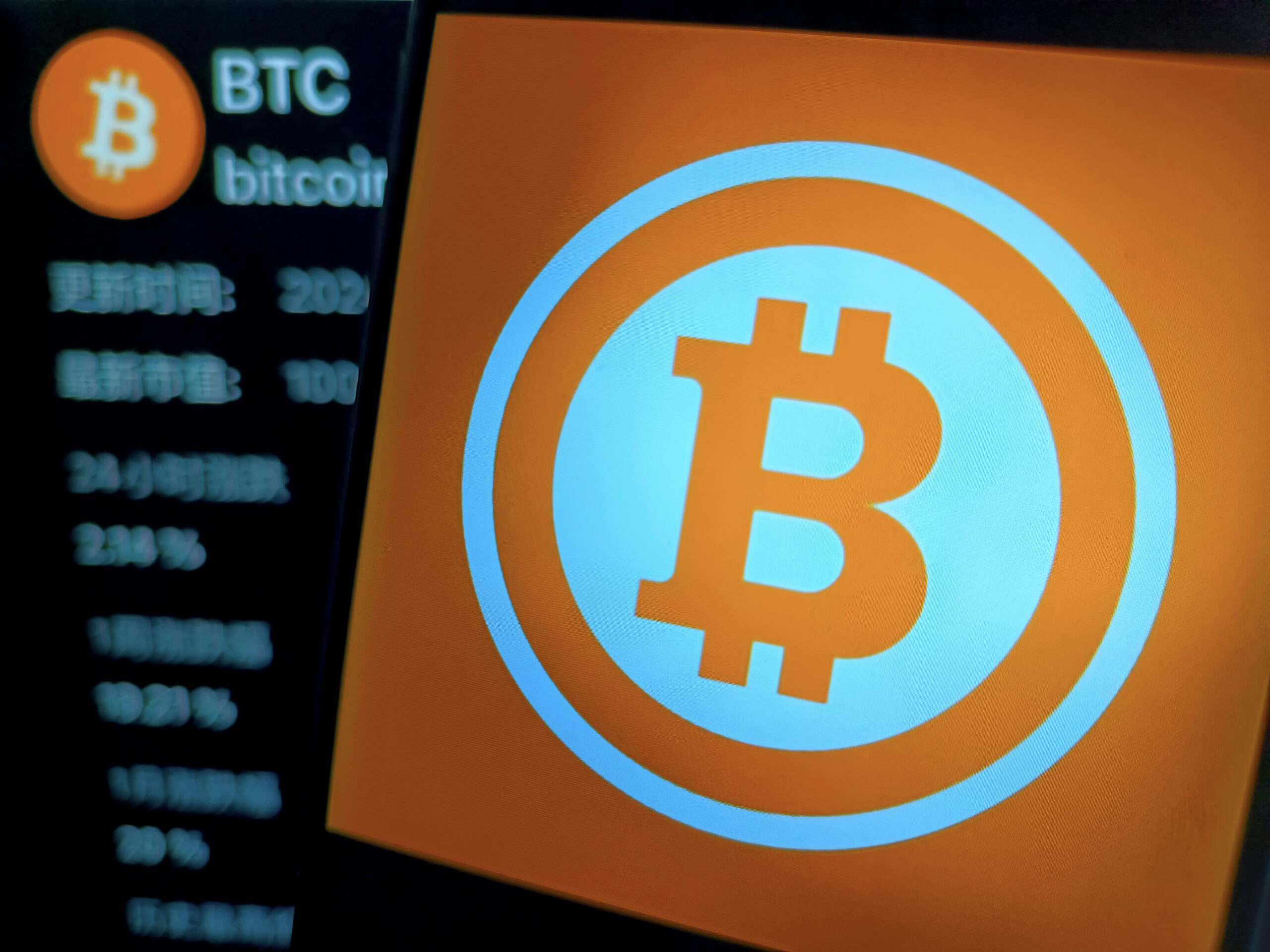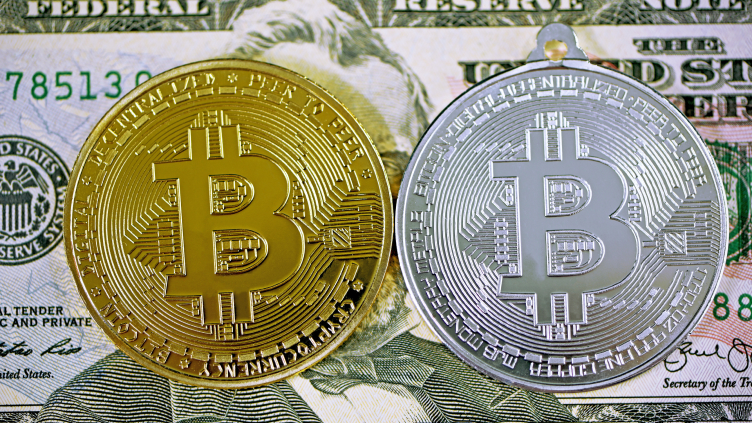Bitcoin
Are Spot Bitcoin ETFs Millionaire Makers?

Throughout its 15-year history, Bitcoin (CRYPTO:BTC) is up over 18,000% and made many millionaires along the way. But what about spot Bitcoin ETFs?
Approved by the U.S. Securities and Exchange Commission in January 2024, the 11 spot Bitcoin ETFs now available to investors make investing in Bitcoin as easy as buying shares through your favorite brokerage. Gone are the days of having to navigate complex crypto exchanges and digital wallets.
Now, investors can give their portfolios exposure to Bitcoin’s unique millionaire-making capabilities by simply purchasing an exchange-traded fund. But before you do, it’s crucial to understand what sets these ETFs apart from each other – and which one is the best option to help you achieve millionaire status as Bitcoin continues its price appreciation journey.
Bitcoin’s Growth Trajectory and Spot ETFs
Because spot Bitcoin ETFs track the price of Bitcoin, in the same way that gold ETFs track the price of gold, the chances of achieving millionaire status depend on Bitcoin’s ability to continue growing. Fortunately, its inherent characteristics should make the cryptocurrency more valuable over time.
While exploring Bitcoin’s unique qualities that promote price appreciation over time is a topic for another day, investors should keep in mind that Bitcoin is still in its early stages of adoption, with many analyzes suggesting that it is in a similar position to the early days. from Internet. Well-known Bitcoin analyst Willy Woo sees as much wealth creation value in this moment as Internet investors experienced after the turn of the millennium.
Furthermore, now that spot Bitcoin ETFs have been approved, deep-pocketed institutional investors who were previously excluded from the Bitcoin market have entered the game. This means that even more pressure will be placed on the finite supply of Bitcoin.
While purchasing Bitcoin is the best way to capitalize on its future growth, ETFs are still a viable option to help you achieve millionaire status. However, when doing this, there are a few other things to keep in mind.
The story continues
Understanding the Effect of Fees
It may seem simple. If Bitcoin rises, ETFs will also rise. However, there is an additional factor that comes into play: fees.
Each Bitcoin ETF is provided by a company. And because these companies are in the business of making money, they charge fees for their services. These fees may seem small, but for the investor who wants to become a millionaire, they cannot be forgotten.
Today, the 11 different spot Bitcoin ETFs trade at a variety of rates. The lowest is Franklin Templeton Digital Holding Trust (NYSEMKT: EZBC) by 0.19%. The highest is Bitcoin Trust in Grayscale (NYSEMKT:GBTC) by 1.5%.
Let’s use a hypothetical scenario to compare the effect these fees have. Suppose Bitcoin produces a 30% annualized return, a mark that history has proven to be the base case, and our hypothetical investor invests $1,000 every year in these ETFs.
The Franklin Templeton ETF would make our investor a millionaire after 22 years. On the other hand, the grayscale investor would take 24 years. This may not seem like much, but eventually the effect becomes more evident. In year 30, our Franklin Templeton investor would have almost $11 million, while the Grayscale ETF holder would have about $8 million, all because of a 1% difference in fees.
Striking a Balance with AUM
Finding an ETF with the lowest possible fees is the first step when trying to maximize your Bitcoin-fueled millionaire dreams. However, there is another factor that needs to be considered – assets under management (AUM).
Funds with higher AUM tend to have greater liquidity, that is, there are more buyers and sellers in the market, making it easier to buy or sell shares without significantly affecting the price. This liquidity can be particularly beneficial in times of market volatility when rapid trade execution is essential.
Additionally, ETFs with larger AUM often have more resources at their disposal, allowing them to implement sophisticated trading strategies and employ experienced portfolio managers. These features can increase the fund’s ability to accurately track Bitcoin’s underlying price movements, reducing tracking errors and ensuring the ETF closely mirrors Bitcoin’s performance.
Of the 11 spot Bitcoin ETFs, the Grayscale Bitcoin Trust leads with over $18 billion in AUM. However, it has the highest rates. Providing a more reasonable balance is BlackRock’s goal iShares Bitcoin Trust (NASDAQ: IBIT), with $17.3 billion in AUM and a yield of 0.25%. There is also the Fidelity Wise Origin Bitcoin Fund (NYSEMKT: FBTC), with AUM of $9.5 billion and a similar 0.25% fee that is currently waived but will take effect in August of this year.
Becoming a millionaire
In the investment world, few assets compare to the enthusiasm and potential of Bitcoin. As the leader of the crypto asset class, Bitcoin is well positioned to ride the wave of growing interest in digital assets across the world.
Some experts predict that its value could skyrocket to more than US$1 million before 2030, as new demand competes for its finite supply. Spot Bitcoin ETFs can help investors realize their dreams of becoming millionaires in a simple and straightforward way. Just remember to strike a balance between fees and AUM.
Should you invest $1,000 in Bitcoin right now?
Before buying Bitcoin shares, consider the following:
The Motley Fool Stock Advisor analyst team just identified what they believe is the 10 best stocks for investors to buy now… and Bitcoin wasn’t one of them. The 10 stocks that made the cut could produce monster returns in the coming years.
Consider when Nvidia I made this list on April 15, 2005… if you invested $1,000 at the time of our recommendation, you would have $579,803!*
Stock Advisor provides investors with an easy-to-follow blueprint for success, including guidance on building a portfolio, regular analyst updates, and two new stock picks each month. The Stock Advisor service has more than quadrupled the return of the S&P 500 since 2002*.
*Stock Advisor returns May 13, 2024
RJ Fulton has positions in Bitcoin and iShares Bitcoin Trust. The Motley Fool has positions and recommends Bitcoin. The motley fool has a disclosure policy.
Are Spot Bitcoin ETFs Millionaire Makers? was originally published by The Motley Fool
Bitcoin
Bitcoin Will Surge to $100K After Q4, Here’s Why

Dan Weiskopf, portfolio manager at Tidal Financial Group, spoke with David Lin and discussed the future prospects of Bitcoin. The focus was on the future of Bitcoin, especially its potential to reach $100,000. The talk also touched on recent market trends, noting strong interest in Bitcoin ETFs as a possible boost to its price. Looking ahead, there is hope that more platforms will approve Bitcoin ETFs, possibly pushing its price to $100,000.
Forecasts and Volatility: The Path to New Highs
While some predict Bitcoin could go as high as $150,000 or even $1 million, Dan agrees that it needs to hit $100,000 first. Dan also acknowledged Bitcoin’s volatility, saying that large price drops of as much as 50% to 70% could happen, drawing on his experience since 2017.
“We’re going to new highs because I think partly because ETF inflows have been really strong lately. Yeah, and then I think you’ll have more platforms approving spot Bitcoin ETFs in Q4, and we’re going to go up to 100K,” he said.
Big Investors and the Transformative Power of Bitcoin
He also discussed what is persuading large investors to get in on this cycle. He mentioned two key factors. Many argue that if you haven’t invested in Bitcoin, you’re missing out, citing its strong performance over the past decade. This pressure could influence returns and client expectations.
However, he emphasized a deeper reason: if you are not embracing the transformation driven by Bitcoin and digital assets, you may face challenges. This technology has the potential to reshape industries, just as the internet revolutionized business.
“A lot of people look at Bitcoin and crypto and don’t appreciate that with higher prices comes more supply. We talk about 100K, I would expect more supply to come into the market as we go up, and that’s not really new news, but it’s higher demand that’s offsetting that supply,” he added.
Read too: It’s time tor ETH Point ETF: Here’s What to Expect From the Ethereum Price Rally
Bitcoin
Bitcoin Jumps as Markets See Increased Chances of Trump Victory

CFOTO | Future Publishing | Getty Images
Bitcoin hit a two-week high on Monday as betting markets suggested a higher chance of crypto-friendly candidate Donald Trump winning the US presidential election.
The value of the world’s largest cryptocurrency, bitcoin, was up about 5% as of 1:40 p.m. London time to $62,781.48, according to CoinGecko.
The rally follow the dramatic and failed assassination attempt about the former president Trump on Saturday.
“There is a ‘parallel’ to the assassination of President Reagan in 1981,” even though it was not an election year, Ben Emons, chief investment officer at FedWatch Advisors, said in an emailed note.
“After the incident, Reagan’s popularity skyrocketed amid a double-dip recession. The S&P 500, however, fell 9% in the aftermath due to the economic malaise. But in the current strong economy, former President Trump’s favorability is likely to skyrocket and impact markets positively.”
Investors said on the weekend they were hoping that so-called “Trump victory trades” would get a boost. These trades broadened to include several cryptocurrency stocks, such as Coinbase Global and miner Riot platformswhich rose 4.5% and 5.25%, respectively, in pre-market trading.
“Bitcoin’s price rose about 9% over the weekend, which could indicate that investors are hoping that a Trump presidency will create a more favorable regulatory climate for the crypto industry,” Zach Pandl, head of research at Grayscale Investments, told CNBC in an email.
Trump has yet to lay out any detailed proposals on cryptocurrency regulation, but the Republican candidate is now seen as broadly supportive of the sector — despite his past skepticism. He is set to speak at a major annual bitcoin conference later this month.
Trump’s campaign started accepting donations of the cryptocurrency industry in May and its the message became increasingly positive about the future of these digital assets. He also sought to position oneself against Democrats who are in favor of controlling the industry, such as Senator Elizabeth Warren.
“In addition, macro policy changes under a second Trump presidency — including continued deficit spending, reduced U.S. leadership in international affairs, weaker Federal Reserve independence, and a desire for currency weakness to help reduce the trade deficit, among other things — could introduce downside risks to the U.S. dollar in the medium term. Any downside risks to the U.S. dollar could provide support for Bitcoin’s price,” Pandl added.
Last month, analysts at Standard Chartered said that the US presidential election is the next key catalyst for bitcoin’s price and a Trump victory could push it to $150,000 by the end of the year.
“Cryptocurrencies have not had an easy time in recent months. We are currently in a crisis of previously growing capital inflows into this market that can be measured by the capitalization of stablecoins, which has frozen in the last two months,” Grzegorz Drozdz, market analyst at Conotoxia, told CNBC in an email.
With a higher likelihood of a Trump presidency and the consequent reduced chances of unrest and destabilization in the US, Drozdz now sees a potential “influx of confidence into the markets,” which could positively impact cryptocurrencies and bitcoin in the coming weeks.
Bitcoin
Germany Sells Final Bitcoin Reserves of Initial $3 Billion in Holdings

Germany Sells Final Bitcoin Reserves of Initial $3 Billion in Holdings
The German government completed the sale of its remaining Bitcoin holdings on July 12. The final transaction involved 3,846 Bitcoin, valued at around $62,604 per Bitcoin, which were sent to “Flow Traders and 139Po,” entities likely for institutional/OTC deposit services, according to for Arkham Intelligence.
The majority of the 50,000 Bitcoins sold by the German government over the past three weeks originated from asset seizures. This sale marked the culmination of weeks of increased sales activity by the German government, which unloaded tens of thousands of Bitcoins in multiple tranches. This significant liquidation was a key factor in keeping the Bitcoin selloff at a low of $54,000 on July 5.
Despite Germany’s exit from its Bitcoin holdings, market pressures remain due to Mt. Gox’s impending $9 billion repayment plan. The Mt. Gox exchange, which collapsed in 2014 when Bitcoin was still in the hundreds of dollars, has long been a source of market anxiety. The repayment plan aims to compensate creditors, potentially adding significant selling pressure to the market in the coming weeks. However, it is difficult to estimate the impact of Mt. Gox’s repayment on the markets due to several factors.
Amid heightened selling pressure, institutional investors seized the opportunity to buy the dip. Data from CoinShares showed that U.S. exchange-traded funds (ETFs) saw $295 million in inflows during the week of July 8, reversing a trend of suppressed inflows into these investment funds. This activity suggests that institutional investors remain confident in Bitcoin’s long-term prospects.
Bitcoin
Bitcoin surges as traders bet on Donald Trump election victory after shooting

Unlock the US Election Countdown newsletter for free
The stories that matter about money and politics in the race for the White House
Bitcoin surged on Monday following an assassination attempt on Donald Trump, as investors increased their bets on the former president winning the US presidential election in November.
Bitcoin’s price rose as much as 9.1 percent to $62,830, its highest level in two weeks, after a shooter hit Trump in the ear at a campaign rally over the weekend. The Republican is seen as the most pro-crypto candidate, having hosted industry executives at Mar-a-Lago and expressed enthusiasm for bitcoin mining in the U.S.
Trump’s campaign also accepted cryptocurrency payments, a first for a major U.S. political party, raising hopes of an end to the U.S. regulatory crackdown on the sector seen in recent years.
“The probability of a Donald Trump victory has increased significantly,” said Grzegorz Dróżdż, market analyst at exchange firm Conotoxia, adding that a Trump presidency would have a “positive impact” on cryptocurrencies.
Shares of Trump’s Truth social media company jumped 60 percent in premarket trading. Trump Media & Technology Group went public in March in a merger with a blank-check company and rallied ahead of the debate between Trump and President Joe Biden last month.
The slimmer chances of a second Trump presidency were also felt in broader financial markets. U.S. Treasury yields and the dollar rose in a more muted version of the reaction that followed Biden’s disastrous debate performance.
Many investors believe Trump’s tax-cutting policies would increase deficits and inflation, hurting U.S. Treasuries and boosting the dollar, in a pattern similar to what occurred after his 2016 election victory.
The U.S. dollar index, which tracks the greenback against a basket of six other major currencies, rose 0.2% in morning trade, having weakened so far in July as investors increased their bets on a September interest rate cut by the Federal Reserve.
Yields on benchmark 10-year Treasuries rose 0.03 percentage point to 4.21 percent, reflecting a small decline in price. Contracts tracking Wall Street’s blue-chip S&P 500 and the tech-heavy Nasdaq 100 rose 0.3 percent and 0.5 percent ahead of the New York open.
Monday’s movements “touch[s] with a Trumpian theme given the popular narrative that he is good for business and… his pro-crypto stance,” Rabobank analysts said in a note to clients.
“For markets, the complexities of the US political landscape have boiled down to the assumption that the weekend’s events will lead to a greater chance of Trump winning the November presidential election,” they added.
Bitcoin peaked above $70,000 in mid-March but has struggled to make headway since the so-called halving event in April, when the number of daily bitcoins available for miners to share to secure the bitcoin network fell from 900 to 450. Some analysts had expected bitcoin to rebound after the halving.
-

 News1 year ago
News1 year ago“Captain Tsubasa – RIVALS” launches on Oasys Blockchain
-

 Ethereum1 year ago
Ethereum1 year agoComment deux frères auraient dérobé 25 millions de dollars lors d’un braquage d’Ethereum de 12 secondes • The Register
-

 News1 year ago
News1 year agoSolana ranks the fastest blockchain in the world, surpassing Ethereum, Polygon ⋆ ZyCrypto
-

 Videos1 year ago
Videos1 year agoHistoric steps for US cryptocurrencies! With a shocking majority vote!🚨
-

 Videos1 year ago
Videos1 year agoIs Emorya the next gem💎 of this Bitcoin bull run?
-

 News1 year ago
News1 year agoSolana Surpasses Ethereum and Polygon as the Fastest Blockchain ⋆ ZyCrypto
-

 Videos1 year ago
Videos1 year agoNexus Chain – Ethereum L2 with the GREATEST Potential?
-

 News1 year ago
News1 year agoFnality, HQLAᵡ aims to launch blockchain intraday repositories this year – Ledger Insights
-

 Ethereum1 year ago
Ethereum1 year agoScaling Ethereum with L2s damaged its Tokenomics. Is it possible to repair it?
-

 Regulation1 year ago
Regulation1 year agoFinancial Intelligence Unit imposes ₹18.82 crore fine on cryptocurrency exchange Binance for violating anti-money laundering norms
-

 Bitcoin1 year ago
Bitcoin1 year agoBitcoin Drops to $60K, Threatening to Derail Prices of Ether, Solana, XRP, Dogecoin, and Shiba Inu ⋆ ZyCrypto
-

 News1 year ago
News1 year agoSendBlocks Debuts with Major Support to Improve Blockchain Data Management




















